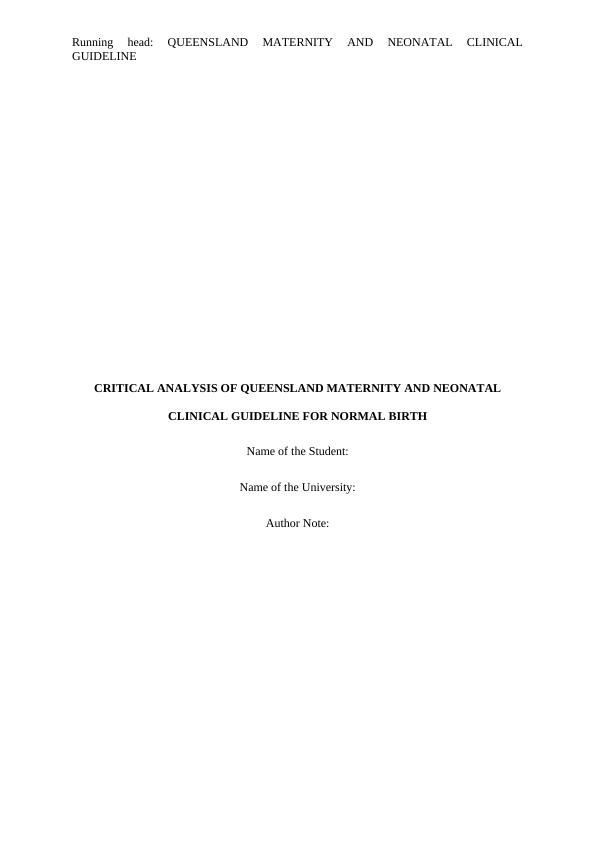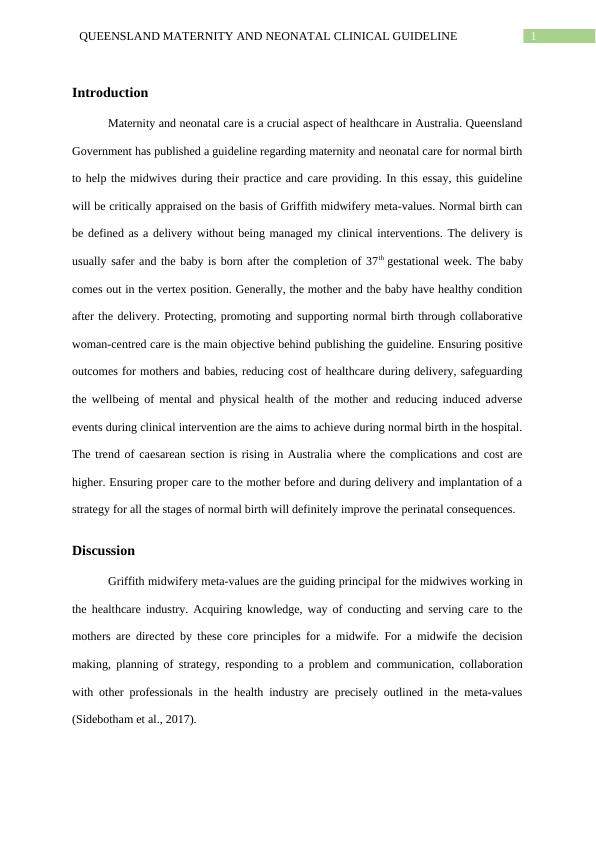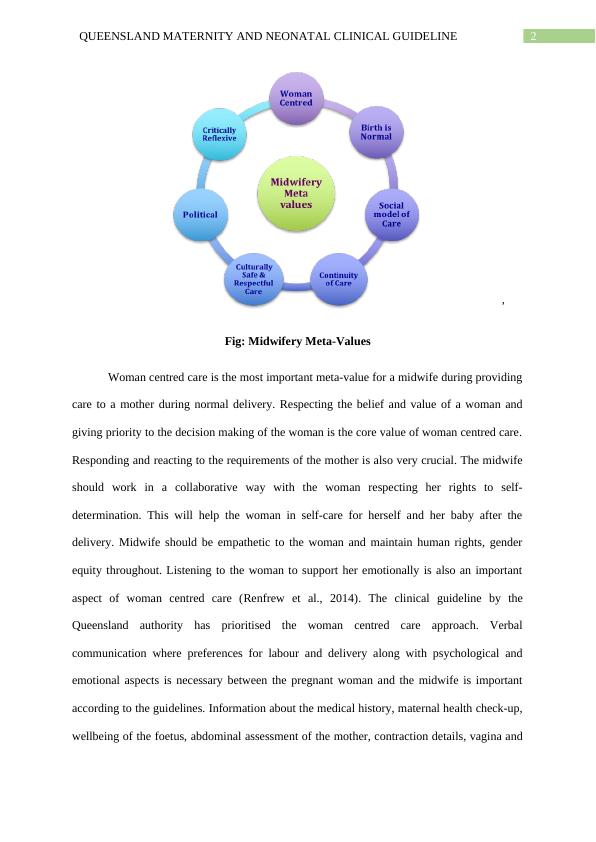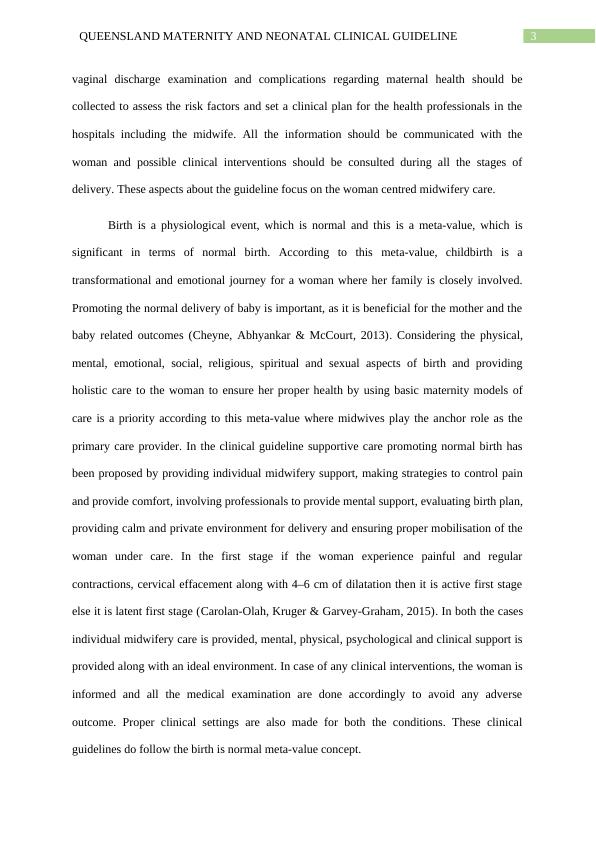Critical Analysis of Queensland Maternity and Neonatal Clinical Guideline for Normal Birth
Critique of the Induction of Labour (IOL) Queensland Clinical Guideline against the Midwifery@Griffith meta value of 'woman's choice', exploring the cues of informed choice/consent and evidence-based care.
Added on 2023-04-25
About This Document
The Queensland Maternity and Neonatal Clinical Guideline for Normal Birth is critically analyzed based on Griffith midwifery meta-values. The guideline emphasizes woman-centered care, promoting normal birth, social model of care, continuity of midwifery care, culturally safe and respectful care, political recognition of midwifery value, and critically reflexive practice. The guideline aligns with these meta-values by prioritizing individualized care, evidence-based practices, respectful communication, and holistic support throughout all stages of delivery. However, it is suggested to further enhance the guideline by incorporating additional elements of standard practice for comprehensive care.
Critical Analysis of Queensland Maternity and Neonatal Clinical Guideline for Normal Birth
Critique of the Induction of Labour (IOL) Queensland Clinical Guideline against the Midwifery@Griffith meta value of 'woman's choice', exploring the cues of informed choice/consent and evidence-based care.
Added on 2023-04-25
End of preview
Want to access all the pages? Upload your documents or become a member.




